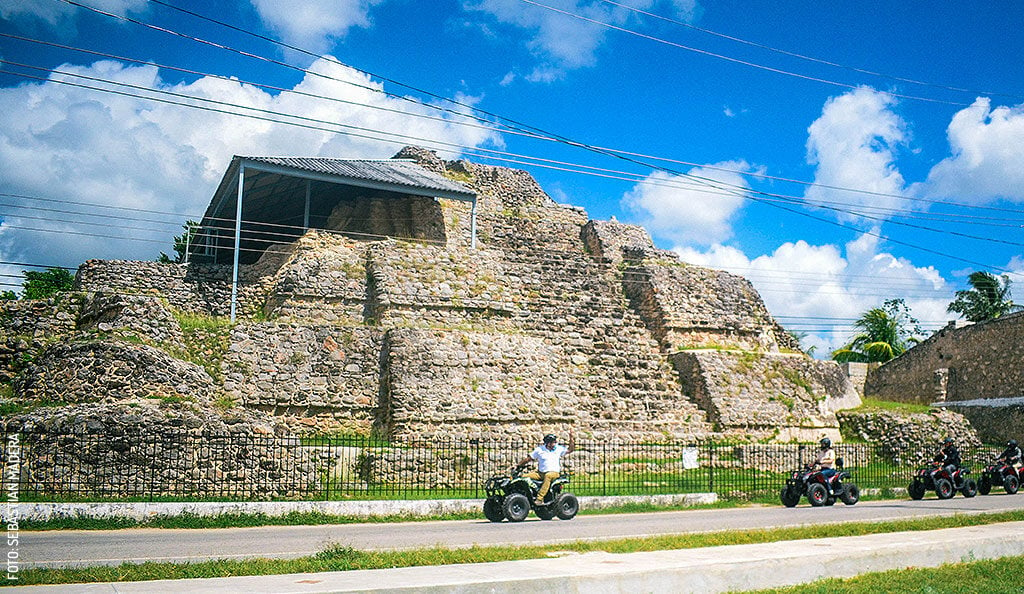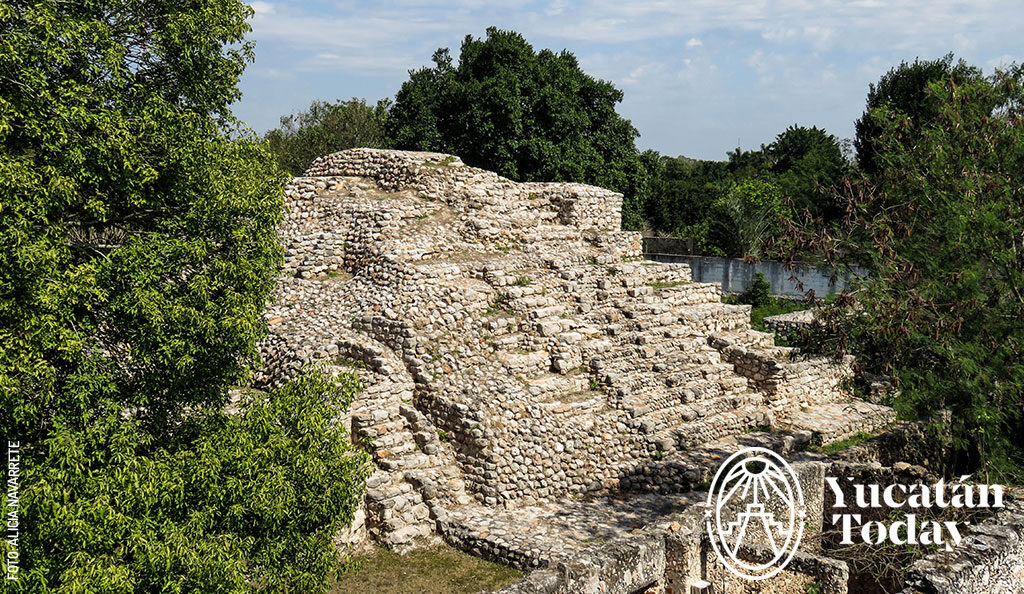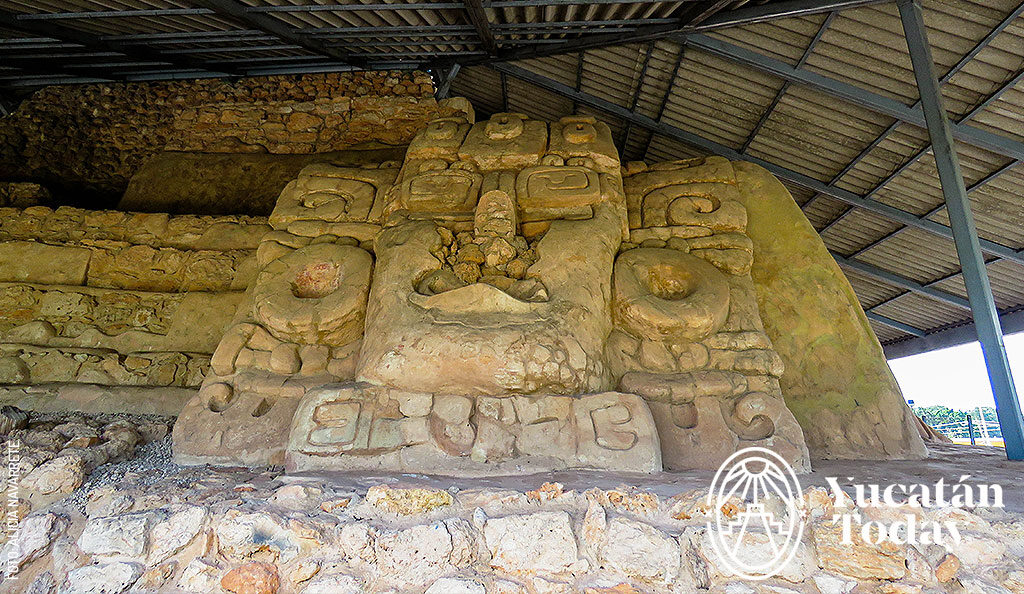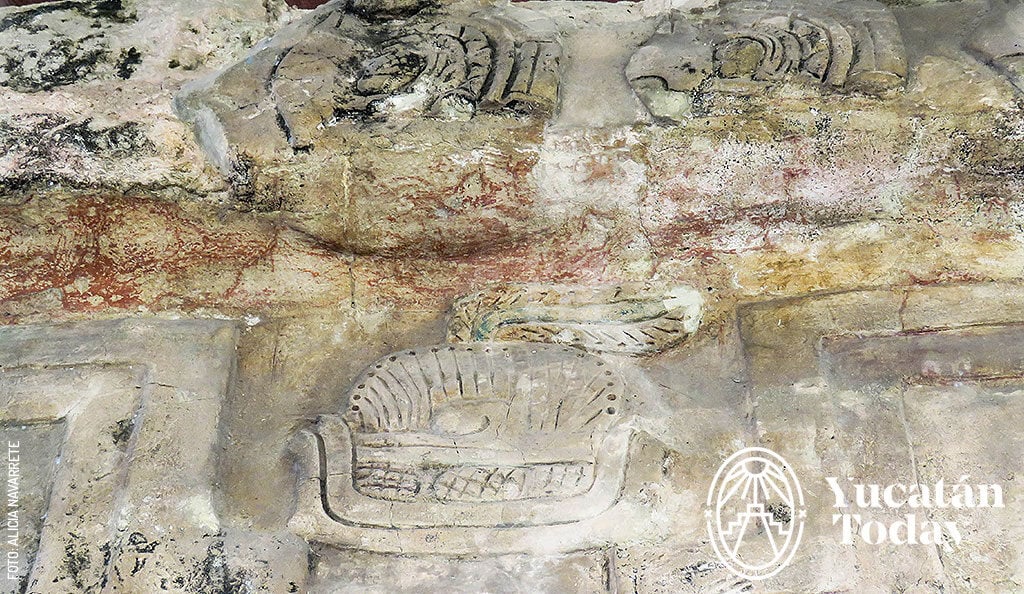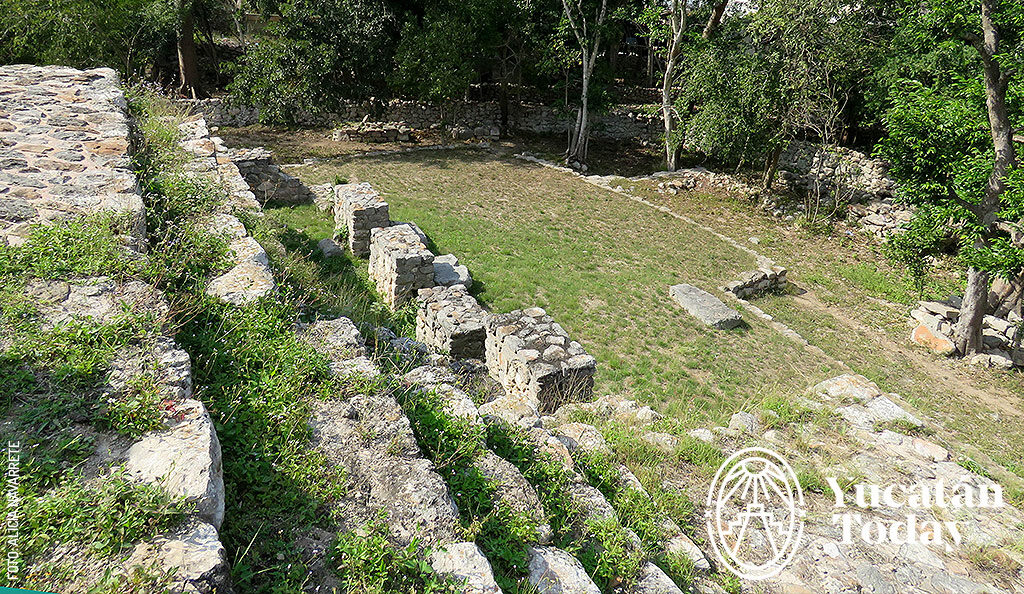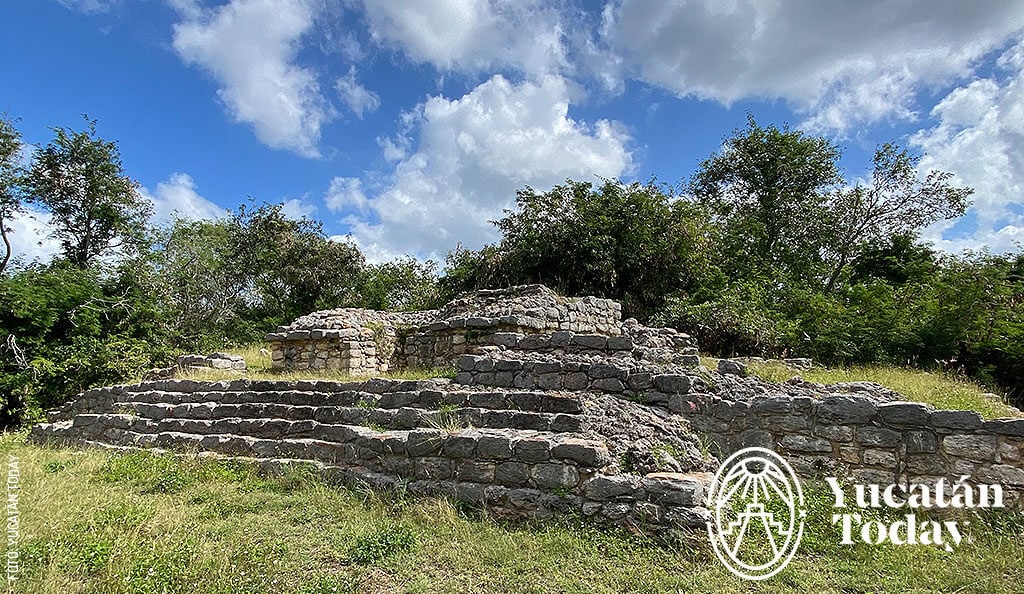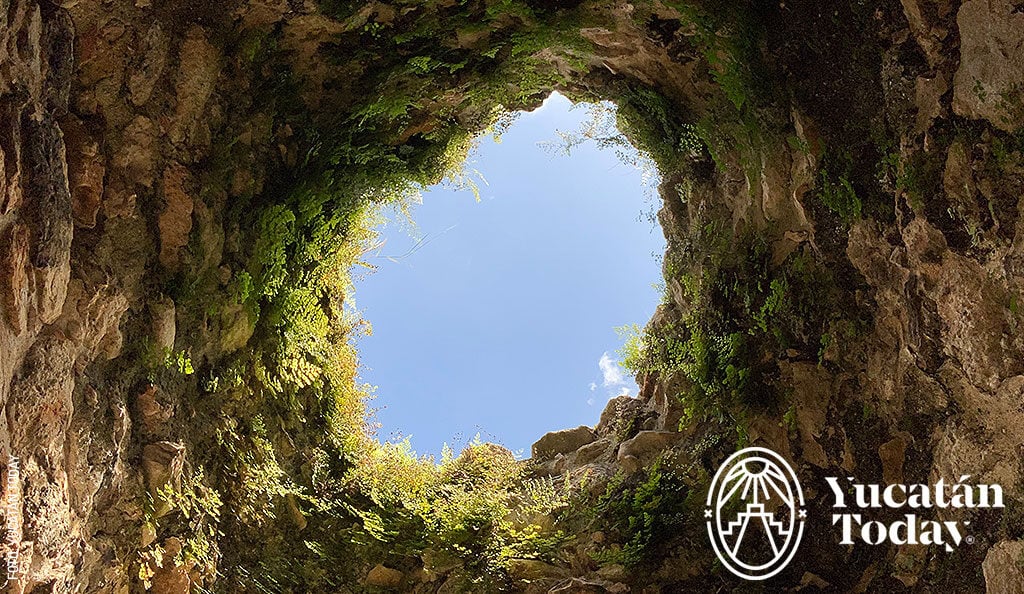Acanceh
(pr. akanké / ah-can-KAY)
Acanceh (remember, it’s pronounced ah-can-KAY) is, along with Izamal, one of the Yucatecan towns where monumental Maya constructions coexist with colonial and contemporary Mexican buildings. Around 300 pre-Hispanic Maya remains have been discovered in the current town of Acanceh. From these, we know that the city was of great economic, religious, and political importance, covering an area of around 3 km². Of all the structures found in Acanceh, the three most visited are also the most monumental: The Pyramid (also known as the Pyramid of the Masks), the Stucco Palace, and the Observatory.
The Pyramid
With a 30-meter (98-foot) base on each side and a height of 15 meters (49 feet), the Acanceh Pyramid is famous for its monumental masks (measuring 2.25 to 3.5 meters or 7.4 to 11.5 ft tall) that flank its stairways. Originally, there were eight, but the first two, facing the street, were damaged and lost due to inadequate protection after their discovery in 1908.
It is believed that the masks represent Kinich Ajaw, the Maya sun god, while the lower faces depict Wits, the mountain god. They are estimated to have been carved during the Early Classic period and were likely used as public incense burners, not only to recreate key events of Maya creation mythology but also to provide sustenance to the gods through the smoke they released.
Fun facts about Acanceh’s Pyramid:
- If you visit during opening hours and find the gate closed, go to the INAH booth on the corner of Calle 20 x 21 (in front of the main park); the custodians will open it for you and share stories about the site.
- The structure we see today was not the last construction phase (remember, the Maya often “remodeled” their buildings by constructing new layers on top of them).
- In several sections of the substructure, you can still see traces of thick stucco with red paint.
The Stucco Palace
The Palace of Stucco in Acanceh is built on a 50-meter-wide (164-foot) platform standing 7 meters (23 feet) tall. Its current state of preservation gives an idea of how much of this structure has been lost over time, but it is known that it originally had four interior rooms (crujías). The building gets its name from a stucco frieze with Teotihuacán influences, featuring two rows of anthropomorphic figures of squirrels, birds of prey, and bats. Unfortunately, the frieze is not in the best condition, making it difficult to fully appreciate the beauty and delicate craftsmanship of the stucco work.
Fun facts about the Stucco Palace in Acanceh:
- Upon arrival, you’ll notice that the most obvious access point is chained and locked—this is not the main entrance. The correct entrance is further to the right (almost in front of the blue house) and remains unlocked during visiting hours. You can enter on your own, but be sure to close it again.
- If you’d like, you can ask the INAH custodians (located in front of the Pyramid of the Masks) if any of them are available to accompany you, but this depends on their workload.
The Observatory
There’s still a lot we don’t know about the Observatory of Acanceh, as an unknown number of its original stones were repurposed for the construction of the colonial city. However, based on what we do know, the structure dates back to the Early Classic period (300-600 CE), though it remained in use until the Postclassic period. This building functioned as an astronomical observatory to study the movements of both the sun and Venus, and it presents several archaeoastronomical phenomena. For example, during the equinoxes, the sun passes through both doors of the building, while every 584 days, at Venus' northernmost rising point, the planet can be seen appearing on the building’s southern side.
Fun facts about the Observatory:
- Un sacbé (calzada prehispánica) de aproximadamente un kilómetro de longitud unía el Observatorio con la Pirámide de los Mascarones; al día de hoy, sobreviven unos 300 metros del mismo.
- A sacbé (pre-Hispanic walkway) approximately one kilometer (0.62 miles) long once connected the Observatory to the Pyramid of the Masks; today, about 300 meters (984 feet) of it remain.
General information:
- Meaning of "Acanceh" in Maya: Deer's lament or groan (áakam kéej)
- Inhabited period of Acanceh: 700 BC - 1000 AD
- Golden age of Acanceh: 700 BC - 250 AD
- Location: Within the town of Acanceh, 30 kilometers southeast of Mérida, taking a detour from the highway to Valladolid
- How to get there (if not by car): Collective taxi or bus from Mérida (Oriente line)
- Services: None, although around the main square there are several shops, pharmacies, etc.
- Prices:
- Federal admission fee: $75 pesos
- Seniors over 60, children under 13, retirees, pensioners, people with disabilities, active teachers, and students are exempt from the federal fee.
- All Mexicans and residents in the country are exempt from the federal fee every Sunday.
- Hours: Every day, 8 am to 5 pm
- Nearby sites and activities:
- Cool off in the cenotes of Homún.
- For a more extreme adventure, head to the cenotes of Telchaquillo.
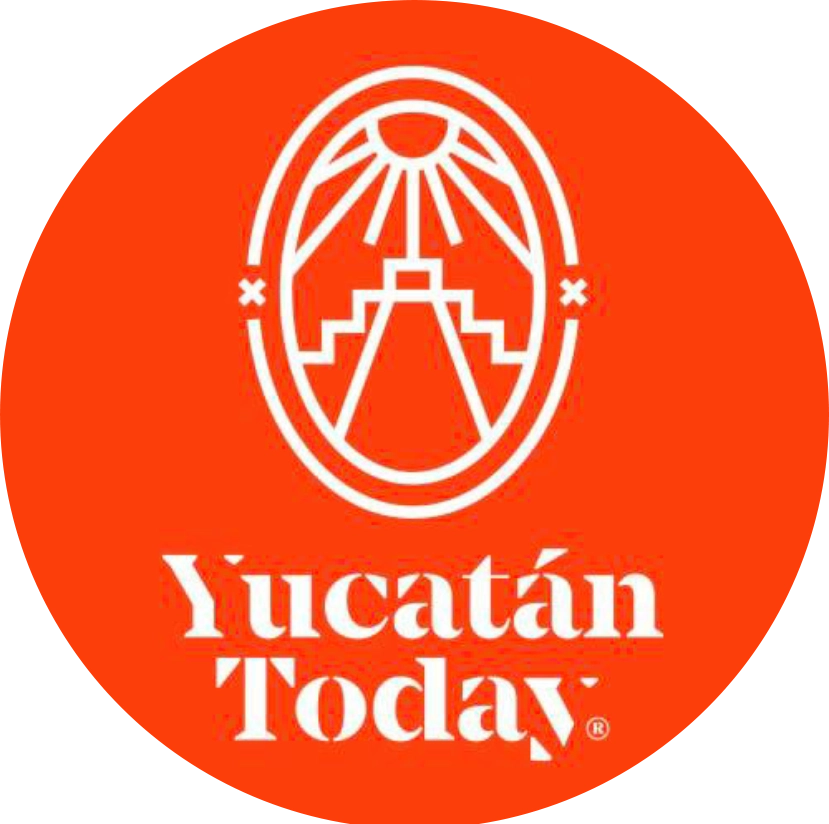
Author: Yucatán Today
Yucatán Today, the traveler's companion, has been covering Yucatán’s destinations, culture, gastronomy, and things to do for 37 years. Available in English and Spanish, it’s been featured in countless travel guides due to the quality of its content.
¡Recibe en tu correo los últimos artículos y mucho más de lo mejor de Yucatán!
Related articles
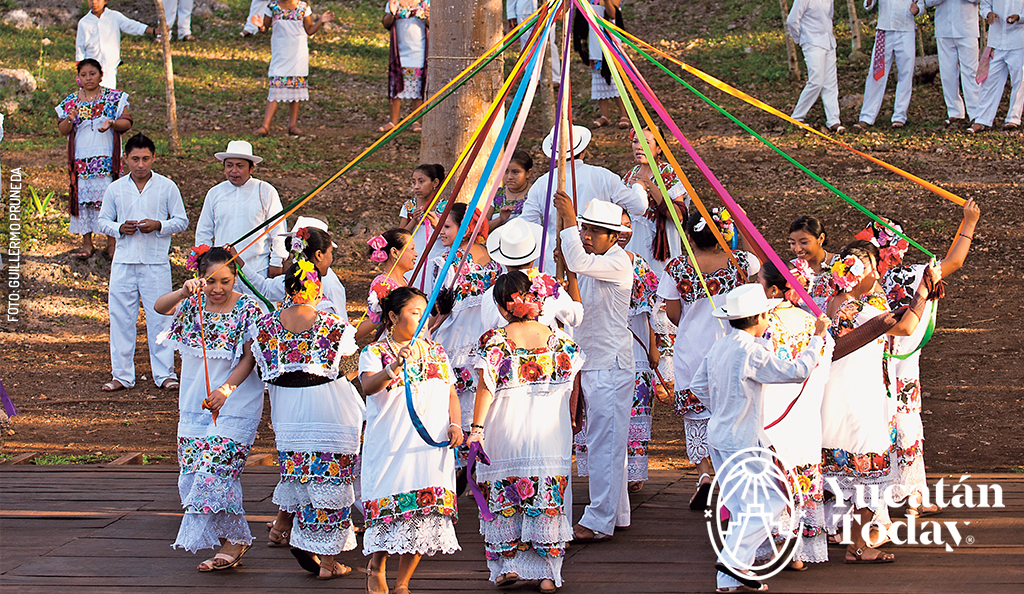
El Baile de las Cintas (The Ribbon Dance)
Experience El Baile de las Cintas: Yucatán's iconic Ribbon Dance. European origins, Maya roots, and vibrant "vaquería" tradition.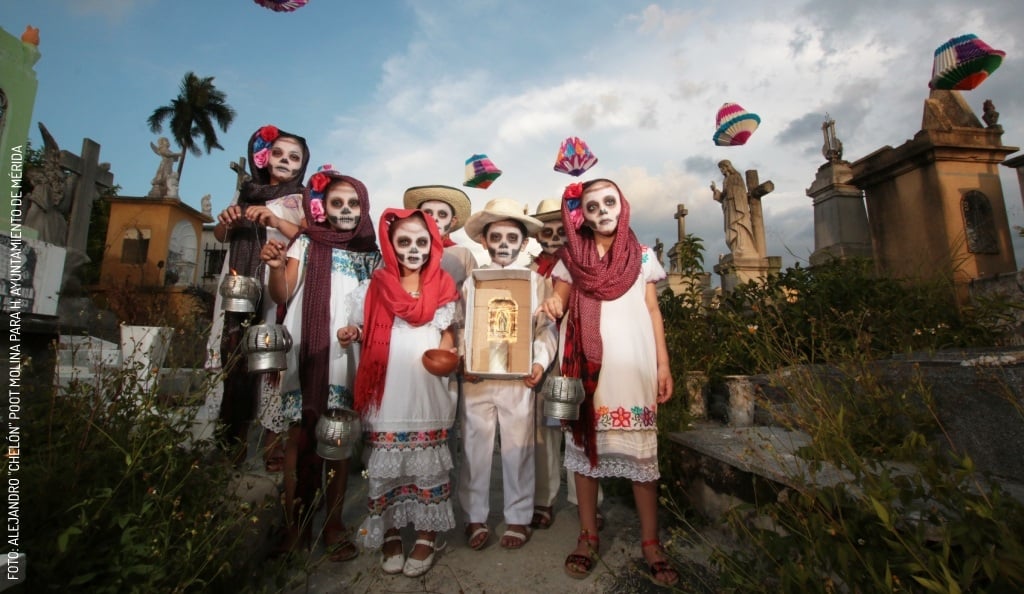
How to Enjoy Mérida's Festival of Souls… and Live to Tell
Your guide to enjoying the Festival of Souls 2025 and experiencing Janal Pixan in Mérida. Parades, altars, catrinas, pib, and the magical Paseo de...



